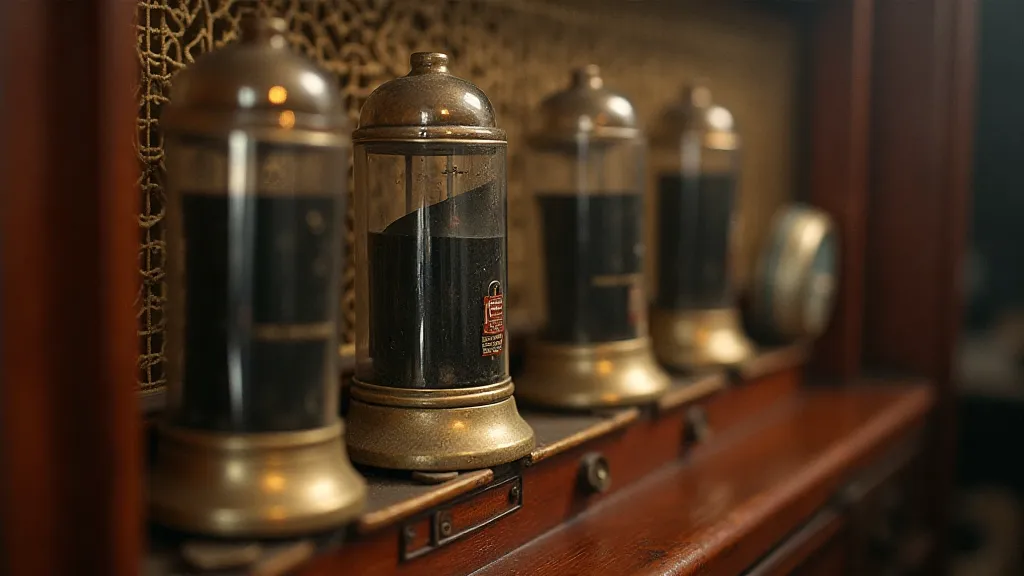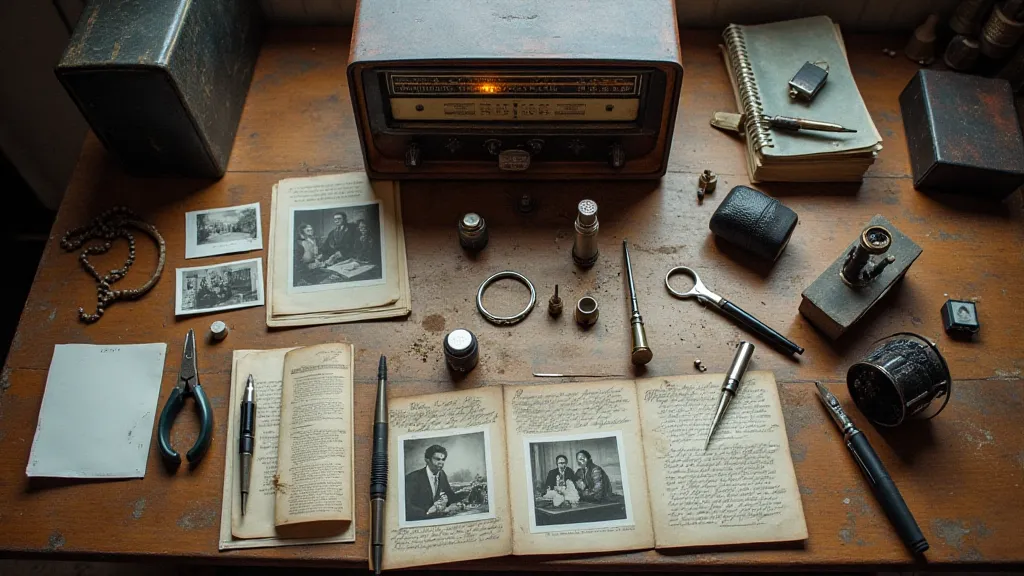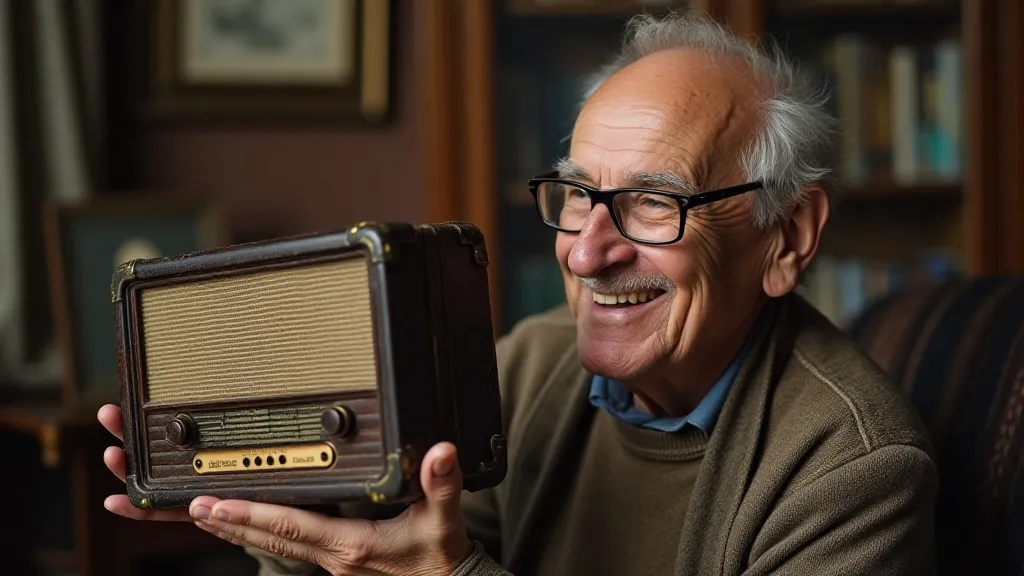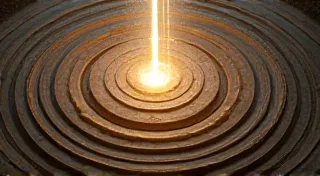The Scribes of Static: Documenting Restoration Projects for Future Generations
There’s a peculiar romance in the hum of an antique radio. It’s a sound that carries echoes of crackling news broadcasts, big band music filling grand ballrooms, and the comforting presence of a voice in a time before instant connection. Holding one in your hands – the weight of the bakelite, the gleam of the chrome, the intricate workings visible through a glass window – isn't just holding an object; it's holding a piece of history, a whisper from a bygone era. And when these radios fall silent, when the static drowns out the music, a vital part of our heritage risks fading away. That’s where radio restoration comes in, and it’s intertwined with a responsibility that extends far beyond simply fixing a broken machine.
My own journey with antique radios began somewhat unexpectedly. I inherited my grandfather’s Zenith Trans-Oceanic, a marvel of engineering from the 1950s. It hadn't worked in decades, relegated to a dusty corner of the attic. While I didn't fully understand electronics at the time, the sheer beauty of it—the dials, the tubes glowing like miniature suns—captivated me. The promise of bringing it back to life felt like more than just a technical challenge; it was a way to connect with a man I barely knew, to understand the world he inhabited.

The Craftsmanship Speaks Volumes
Restoring antique radios isn't just about soldering wires and replacing components; it’s about appreciating the artistry involved in their creation. These weren’t mass-produced items churned out by automated factories. They were built by skilled artisans—cabinet makers crafting the beautiful enclosures, technicians carefully assembling the internal components. Consider the bakelite cabinets—the way the material was molded, the elegant curves, the often-vibrant colors. Or the painstakingly hand-painted scales, each marking precisely calibrated to the radio’s frequency range. These details are often lost in the digital age, where perfection is often synonymous with uniformity and disposable design.
The components themselves were marvels, too. Vacuum tubes, each a tiny glass world containing a delicate filament and carefully engineered electrodes, were the heart of these devices. Replacing a faulty tube isn't just a repair; it's a testament to the ingenuity of early electronics. Understanding how these components function, reading the schematics that describe their operation—it’s a deep dive into the history of technology.
Why Documentation Matters: More Than Just Notes
Now, let’s talk about documentation. It's easy to get caught up in the process of restoration, eager to see the radio humming once more. But neglecting to document your work is a profound disservice, not just to yourself but to future generations of restorers and collectors. Think of it this way: a future restorer might inherit a radio with the original documentation lost, faced with a unique challenge. Your notes, photographs, and schematic diagrams could be their lifeline.
But documentation goes beyond simply jotting down what parts you replaced. It's about capturing the *process*. Taking before-and-after photographs of each stage of disassembly. Sketching the original wiring layout, noting the colors of the wires and their connections. Documenting any modifications or repairs made. Scanning the original manuals and advertisements—these provide invaluable context about the radio's intended use and the era it represented.
I once worked on a Philco 48, a beautifully designed radio from the late 1930s. Its original wiring diagram was incredibly complex, a tangled web of multicolored wires. Without meticulous photographic documentation, the reconnection process would have been a nightmare. Even more importantly, I documented a subtle modification made by a previous owner – a small capacitor added to improve signal clarity. This detail, otherwise lost to time, now becomes part of the radio's history, a testament to someone else's dedication to preserving its functionality.

Preserving Knowledge, Honoring the Past
The act of documenting isn’s just about preserving the technical aspects of the restoration. It’s about preserving the stories embedded within these objects. Radio ownership often signifies a family tradition, a connection to a specific time and place. Imagine a future collector discovering your restoration notes and learning about the family who cherished that radio for decades, the music they listened to, the news they heard. That's a legacy far more valuable than a perfectly restored radio.
Think of it as digital archeology. You're excavating the history of a technological artifact, carefully uncovering its secrets and preserving them for posterity. This isn’t merely about fixing a radio; it’s about creating a time capsule, a tangible link to the past. The more detailed your documentation, the richer that experience will be for those who follow.
A Responsibility to Future Generations
As enthusiasts and restorers, we hold a unique responsibility. We're the custodians of these pieces of history, the caretakers of a fading technology. By embracing meticulous documentation, we ensure that the knowledge and artistry behind these antique radios continue to inspire and inform future generations. The hum of an antique radio isn’t just a sound; it’s a conversation across time. Let’s make sure that conversation continues, loud and clear, for years to come.
Consider creating a digital archive – a website, a cloud storage folder – to share your documentation with other enthusiasts. Collaboration and knowledge-sharing are essential for preserving this heritage. The more information that is available, the more accessible these treasures become, and the more likely they are to be appreciated for generations to come.






